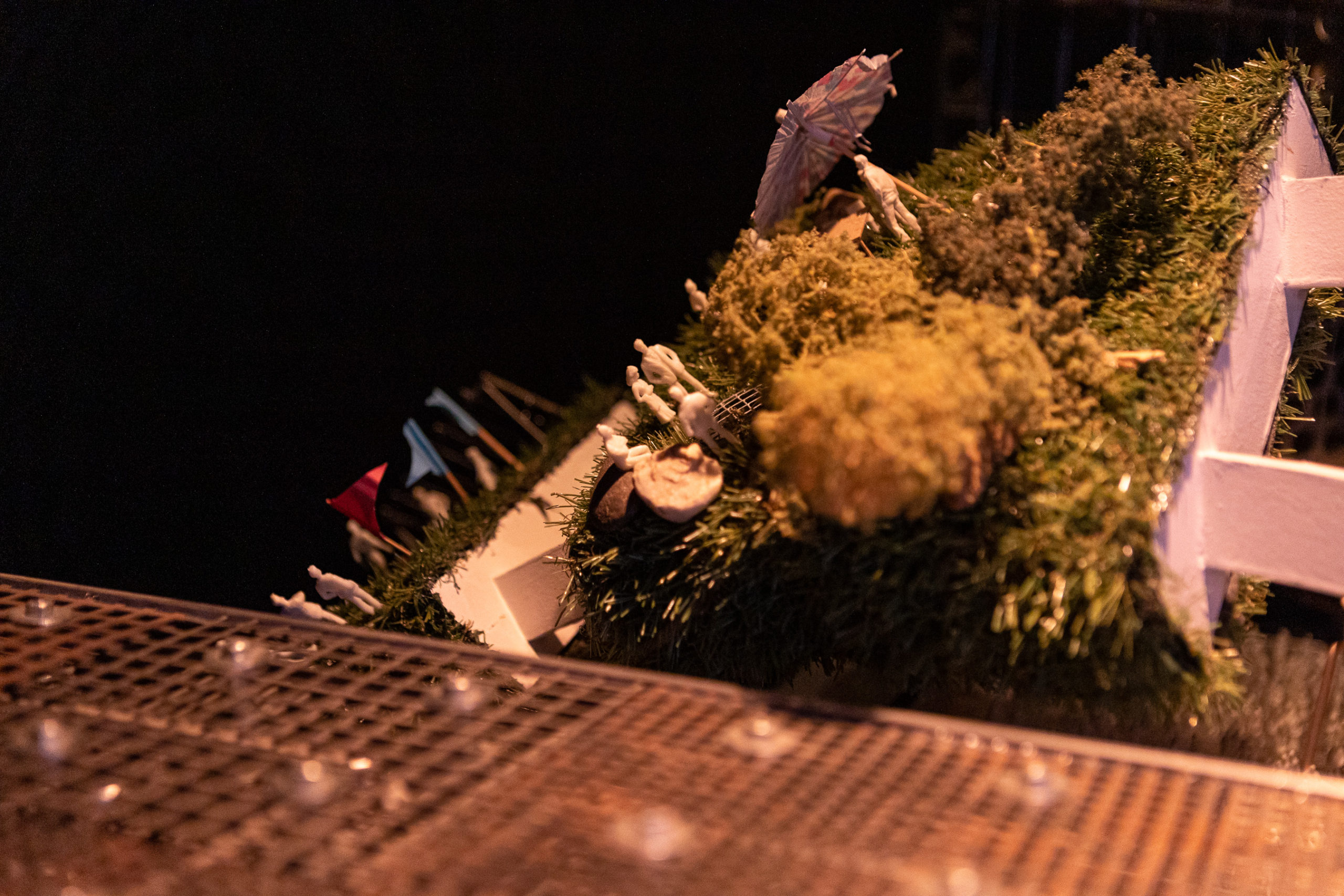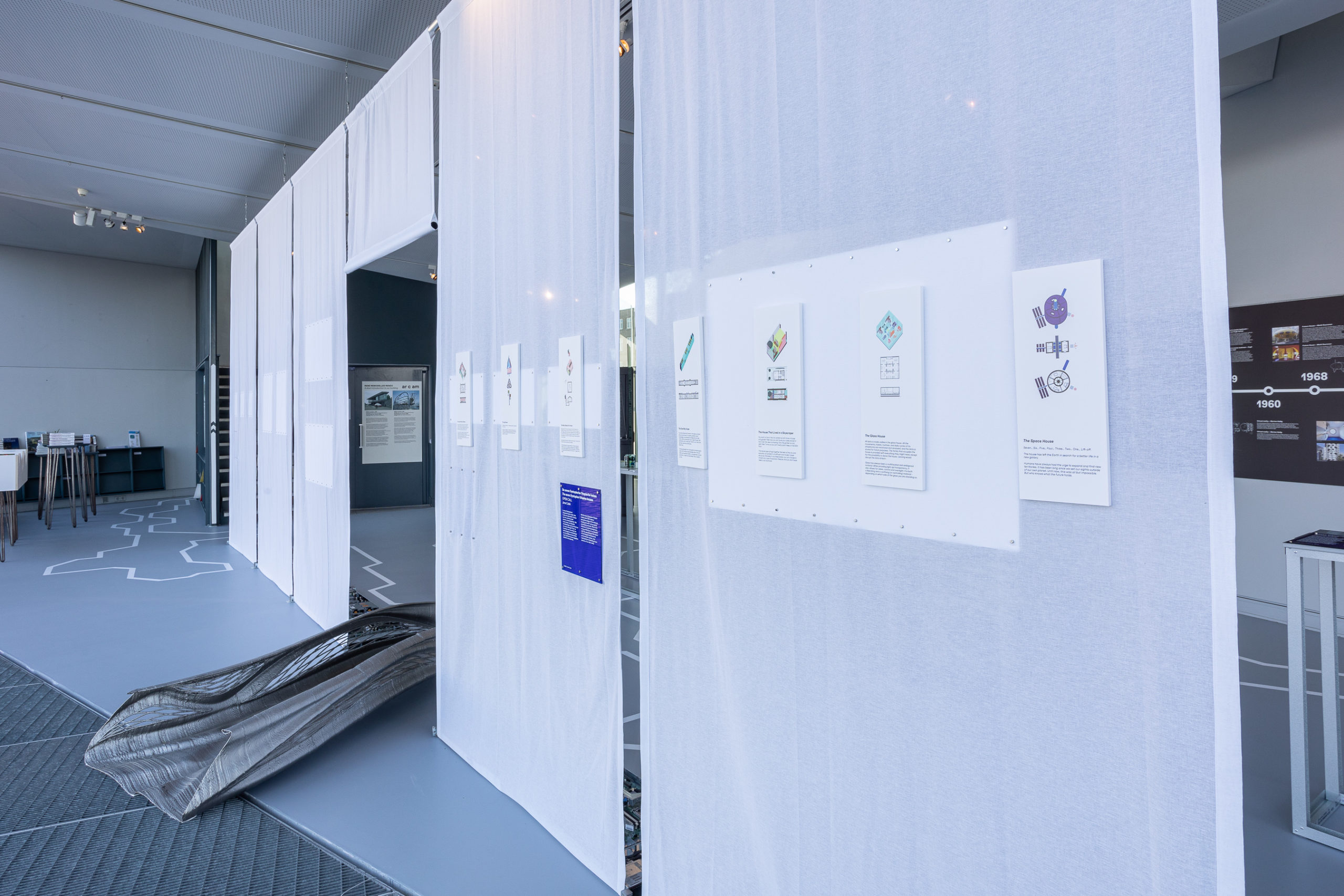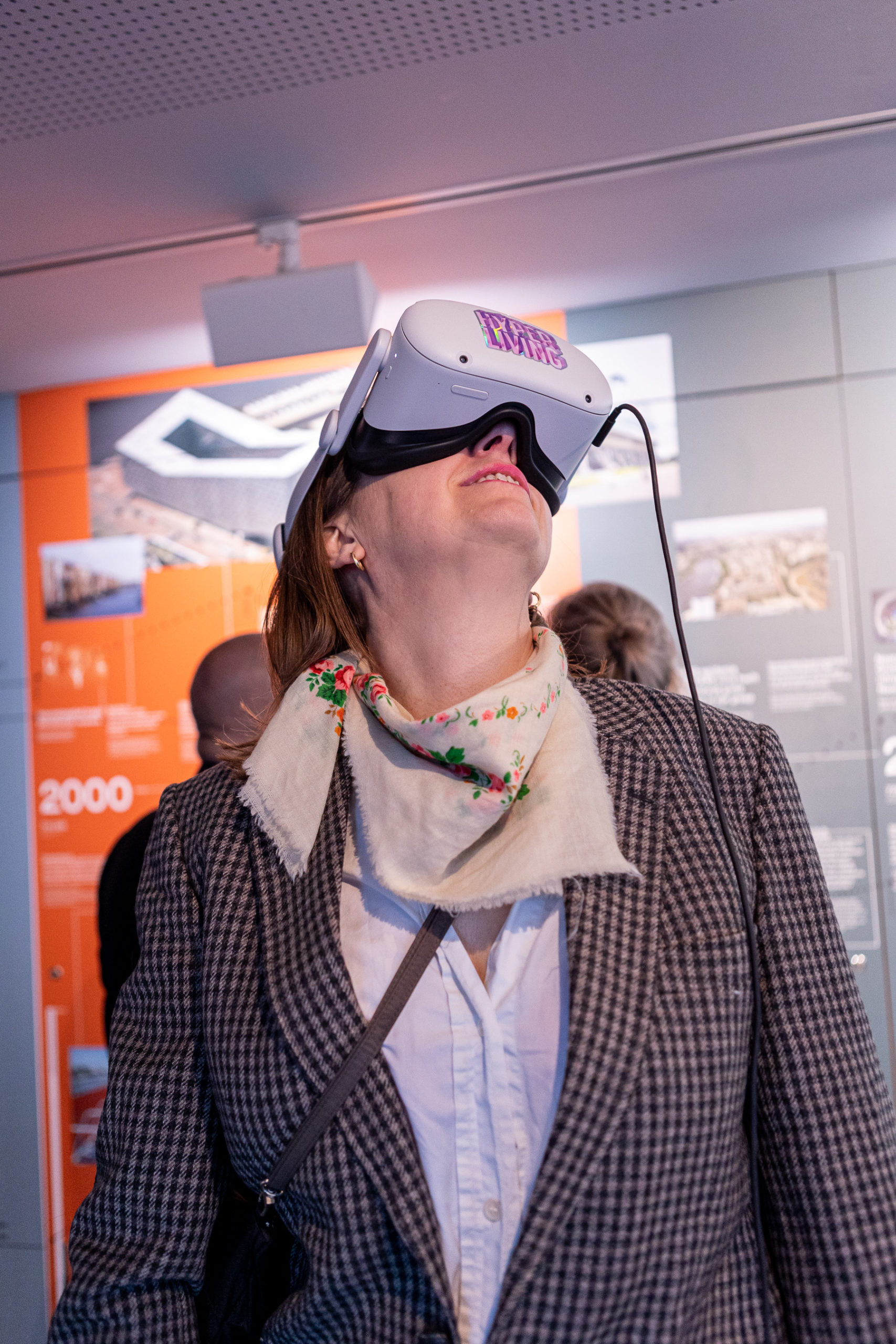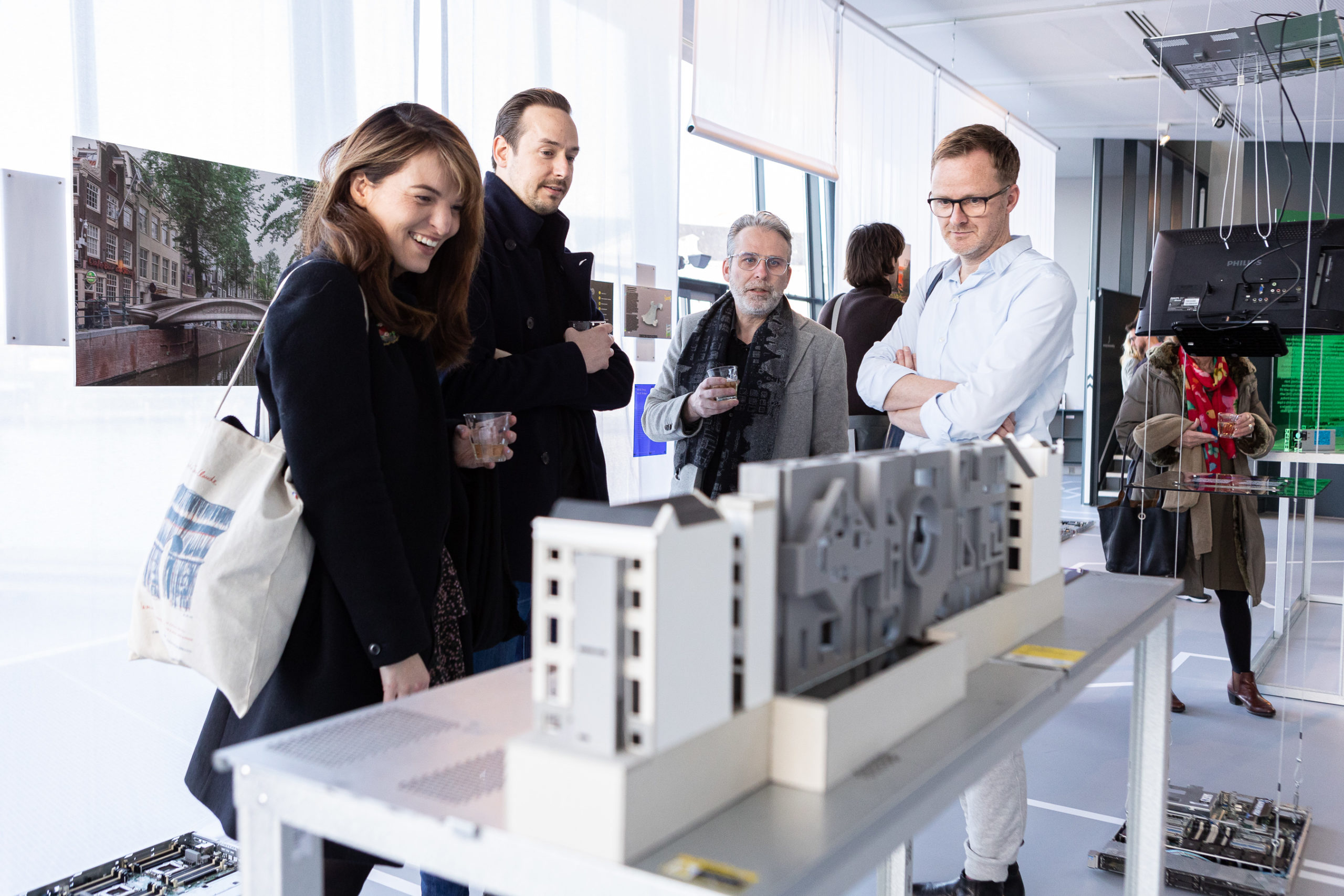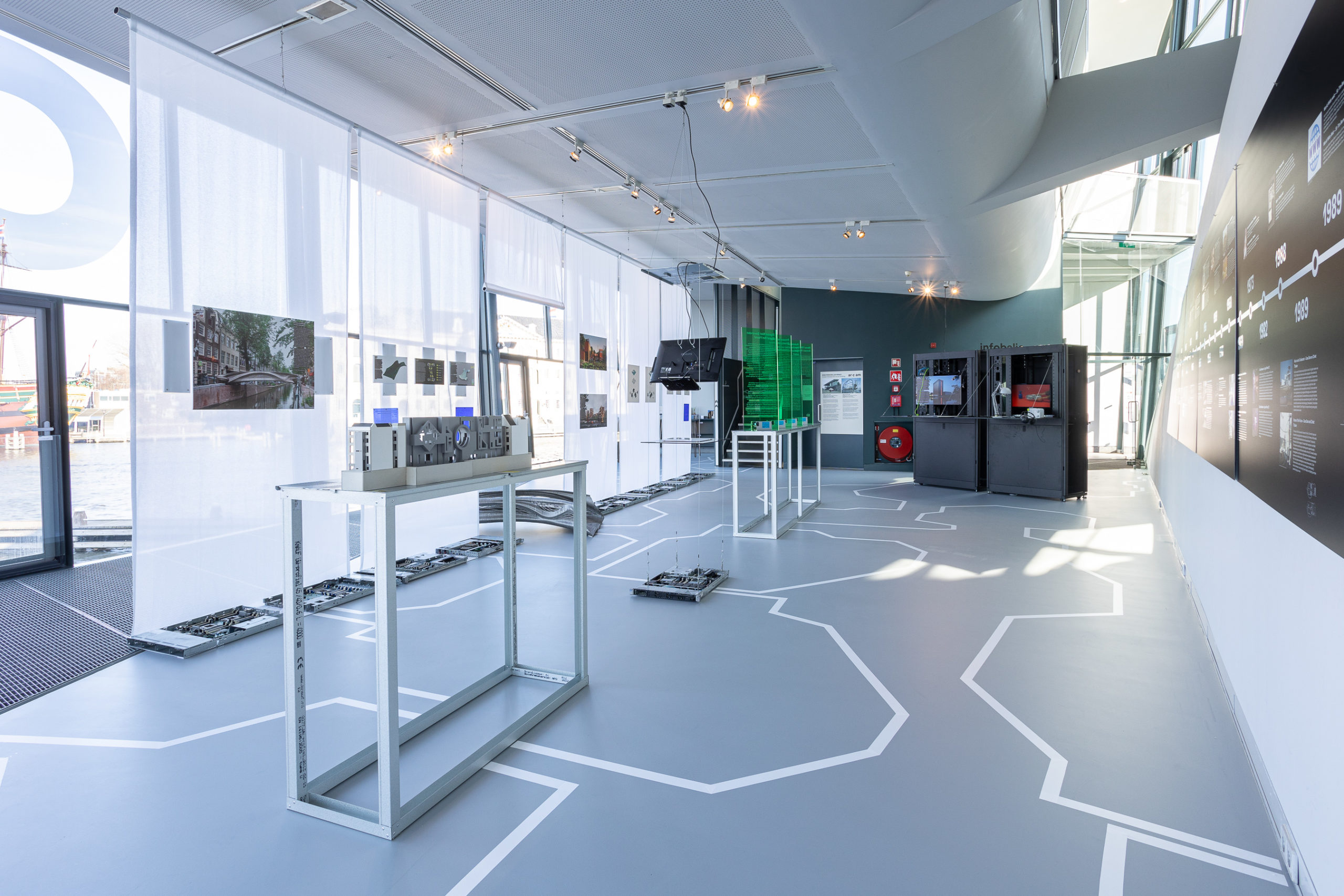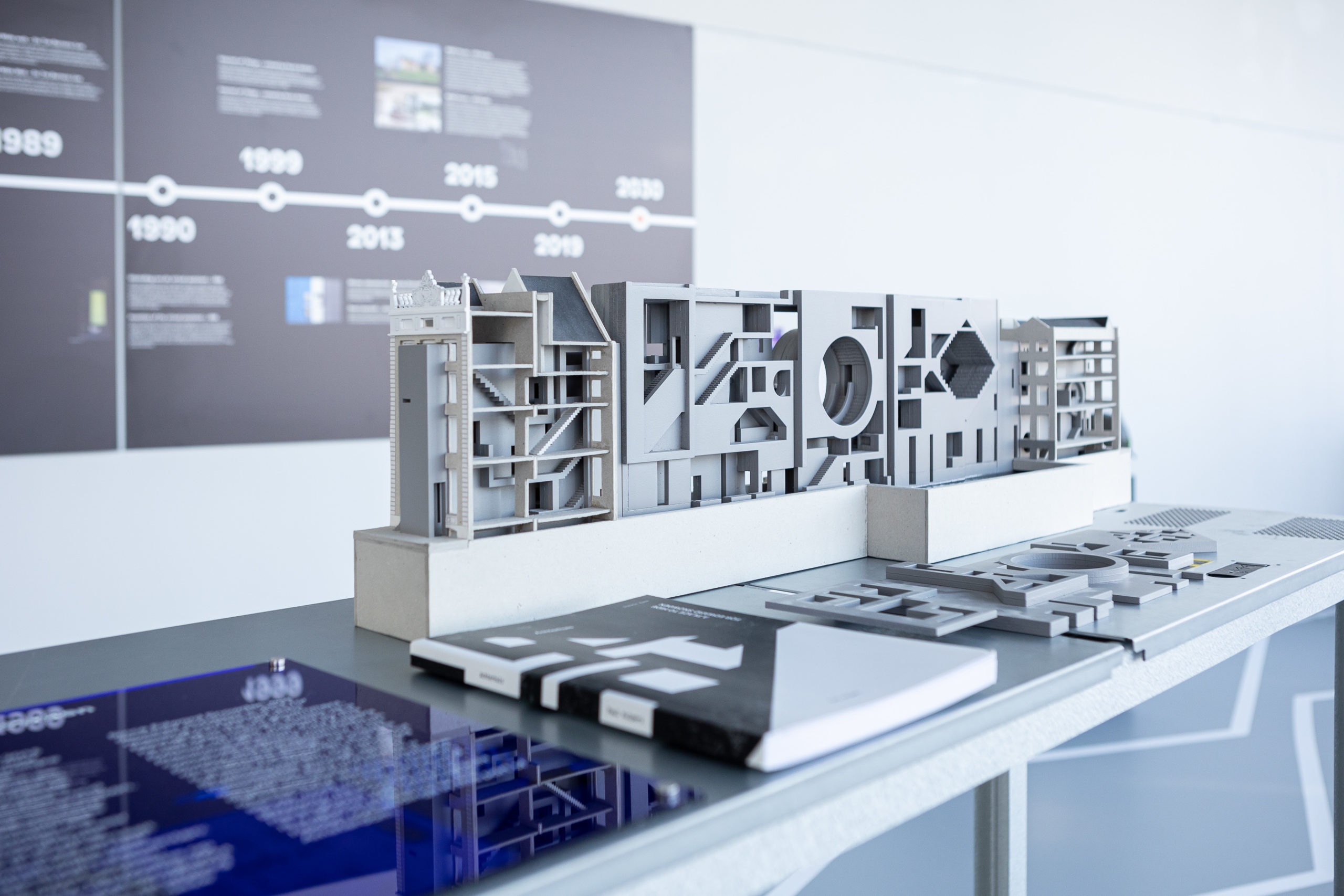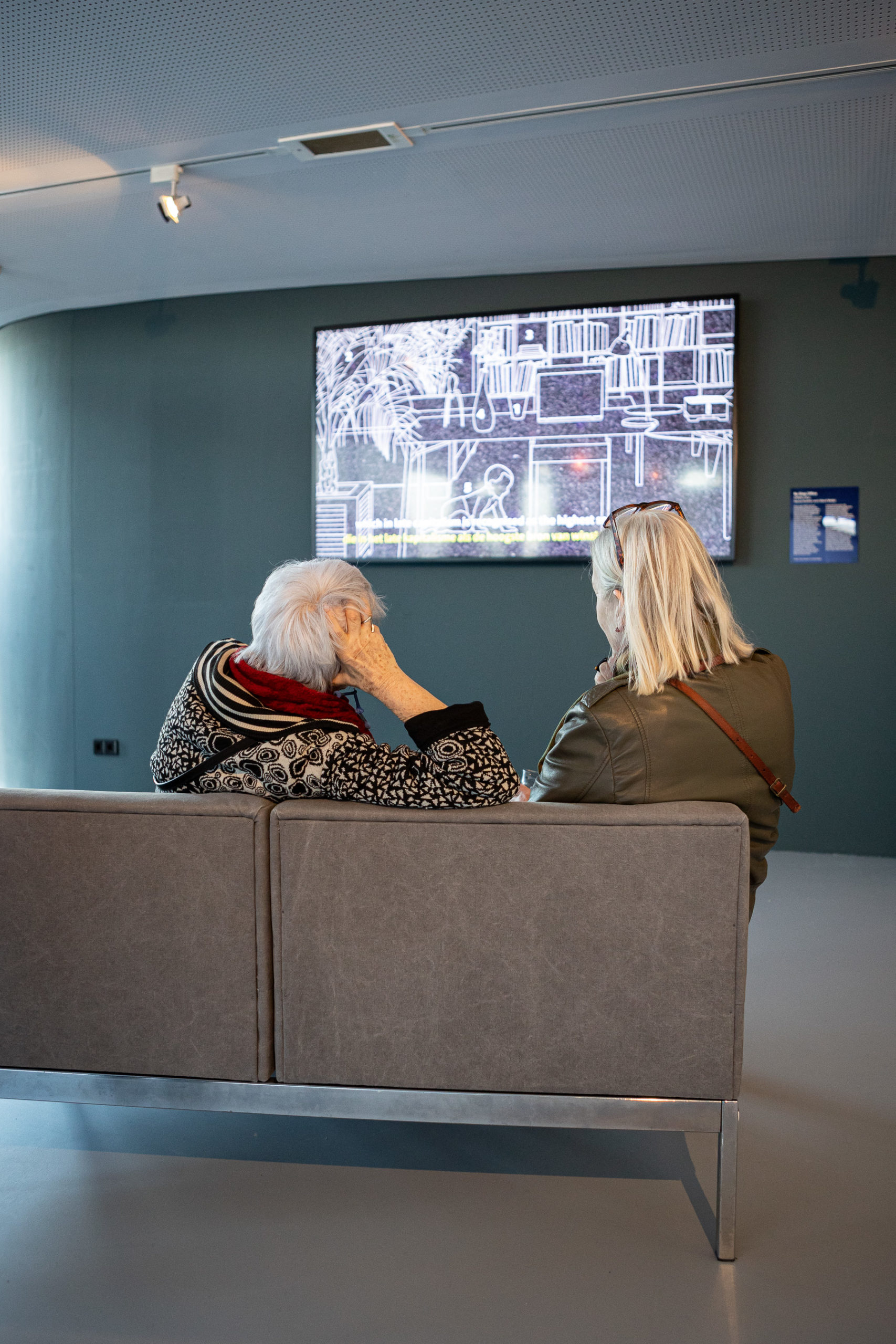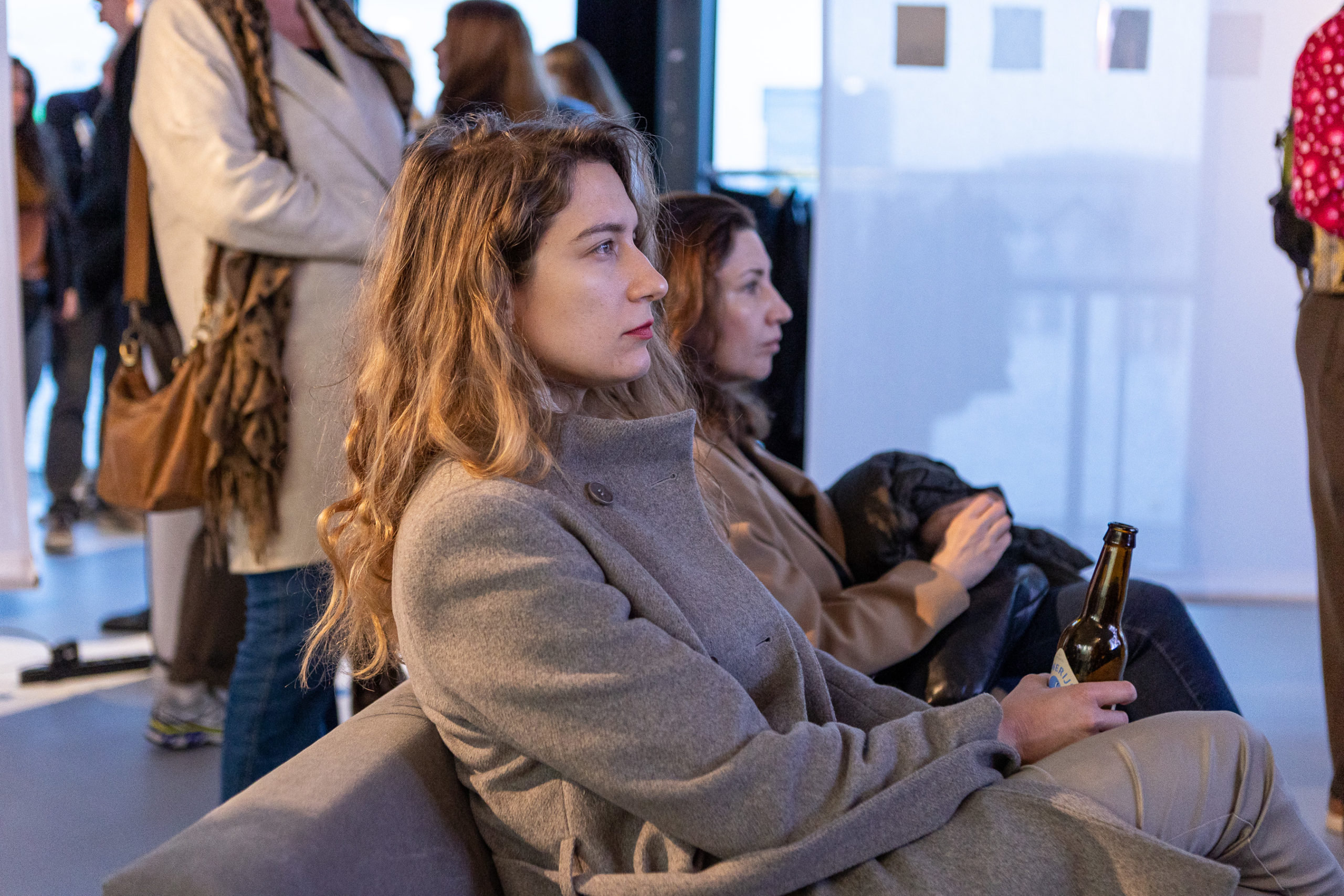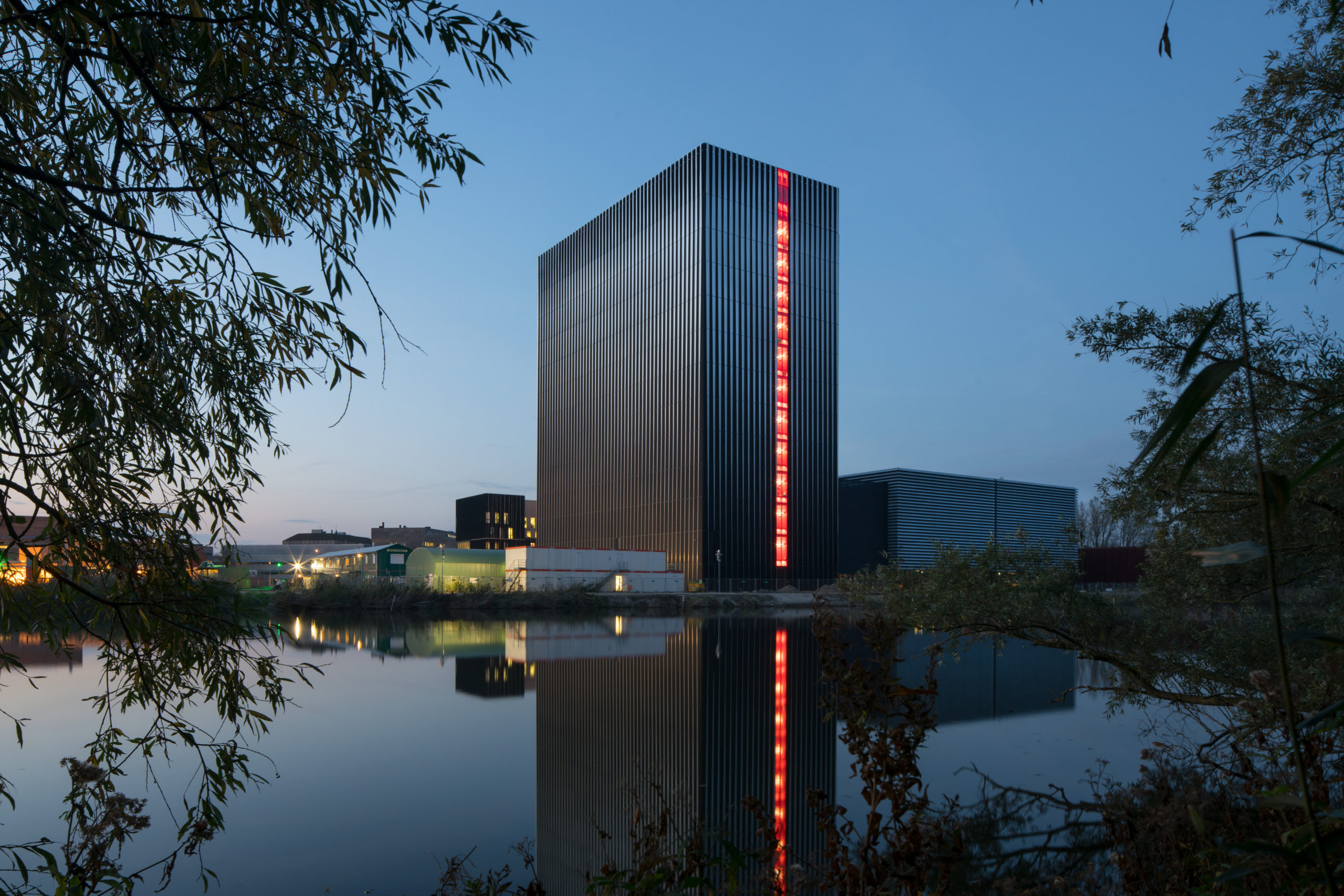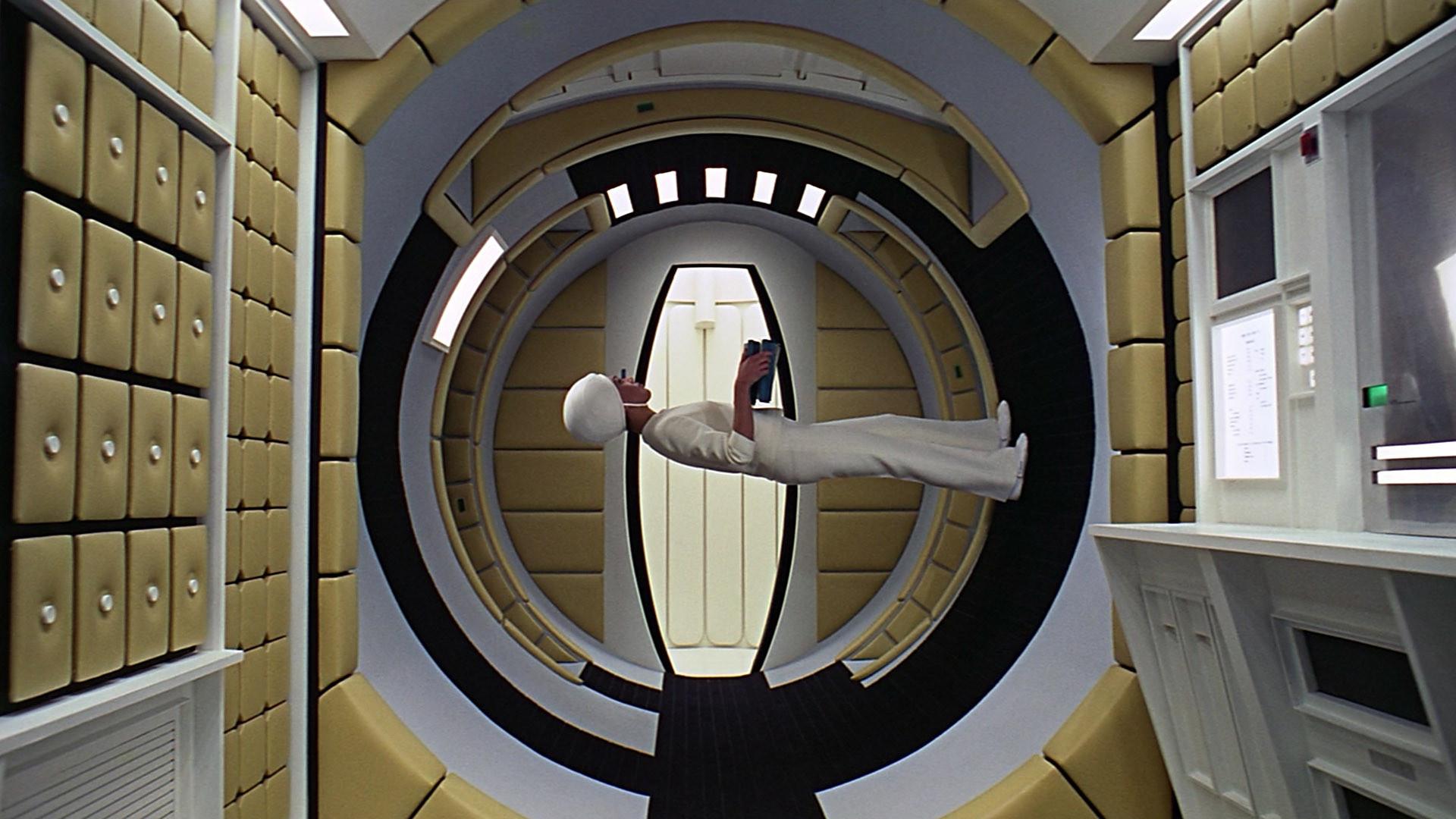How are smart systems in the domestic sphere developing? How does this development impact the design of smart homes? How does the tendency to always be connected online affect our way of life? And what impact does this have on the architecture of our living environment? Will the smart home become a living entity that you can regard as a friend, spy, fitness coach, psychiatrist, or butler?
For the exhibition Private_Eye_Butler_Spy, we invited architects and spatial thinkers via an Open Call to submit a speculative design for the house of the technologised and digitised future.
Participants were given the freedom to create a realistic or speculative, utopian or dystopian design. With a focus on the spatial design of the house and/or its immediate surroundings, in which complex social, economic, ecological, post-anthropocene or extraterrestrial future scenarios can be expressed. The result can be seen at Arcam across all floors.
Meet the six selected makers and their work and vision. And what is their overall opinion on the exhibition?
Paul van den Bergh
META
META is a spatial installation visualizing the consequences of unregulated digitalization. What are the possible physical and spatial outcomes of increasingly advanced technologies? Paul van den Bergh transforms real-life stories into speculative spatial design.
The Private_Eye_Butler_Spy exhibition tells me that internet technologies are getting more mainstream in the architectural discourse. Now it's time to double down, because this is only just the beginning.
Jana Culek
With the seven Dystopian/Utopian houses Jana Culek makes a speculative design of the individual housing unit under various spatial and societal extremes. What is the influence of certain developments on the architecture of our domestic units? By speculating on the impact of technological developments on the domestic sphere, Jana Culek paints an interesting future scenario of our daily reality.
Image 1: The House Without Windows
Is nature still real? Do we even need it? The high-tech house can provide you with any view you wish with just a click of a button. A relaxing terrace by the lake, an exciting trip to the desert, a weekend in the Alps – all this without ever having to leave your pod.
This house builds on a legacy of architectural “plug-in” systems which envision cities of infinite growth and density. With the development of technology, even windows become obsolete allowing for an even denser configuration. We don’t even need to know what surrounds us anymore
Image 2: The Most Beautiful House
Equipped with the most modern 3D OLED facade, this house can take up any form which is currently on trend. It even takes care of the interior appearance and makes sure you have all the latest hot trends. In order not to disturb the facade, you enter the house through the phone booth on the corner. Next week the owner is filing for bankruptcy. Turns out the solar panels were also just a display.
The Most Beautiful House reflects on the ever-popular and taboo topic of architectural styles and our obsession with outward appearances and individuality. The face is once again disconnected from the body. It is again just a mask
The topic of the exhibition touches upon various different ways in which technology can have an effect on or interact with our physical environment. Given that we live in a world where we take a lot of these conditions for granted, or don’t even perceive them, I think the exhibition presents itself as a sort of mirror into our lives, making visible how technology shapes it.
Kuba Jekiel
Hyperliving
Hyperliving, the speculative future scenario imagined by Kuba Jekiel, is set after the fourth Industrial Revolution, in a time when architecture, big data, artificial intelligence, virtual reality, and other technological developments determine the economic and social reality.
In the multifunctional building Hyperliving, artificial intelligence controls software and hardware that is used to create a highly efficient utilization of spaces. In this advanced sharing economy, spaces can be deployed in multiple ways. The building adapts to the needs of its users.
Hyperliving is presented as a video in the exhibition. During the opening of Private_Eye_Butler_Spy, visitors could experience the work with a VR headset.
I am delighted to see that the theme of digitalization of our lives and its impact on architecture is finally being put in the spotlight and can trigger a very important discussion on how do we react to it.
Paul Kuipers
Since Edward Snowden was declared stateless in 2013 for releasing confidential data belonging to the US government, he has been hiding in Russia as a political refugee. Inspired by this precarious situation, Paul Kuipers conceived a spatial manifesto on privacy and transparency. In his architectural design, he creates a shelter for Snowden that is not physically hidden, but rendered inaccessible through spatial encryption.
Paul translates a digital vocabulary into analogue architectural elements: firewall, server, host, router, cache, and gateway. Its location on the Herengracht and Keizersgracht is a spatial reference to the hidden outbuildings in this part of Amsterdam.
I can only applaud the fact that Arcam is contributing to the architectural discourse with themed exhibitions. For too long, the profession has been approached far too much from, among other things, construction pragmatism and project management. This exhibition contributes to the need to approach architecture from a designer's perspective again.
Hanna Rudner and Allard Meijer
In the past two years, the working and studying population of the world had to adapt to the governmental isolation requirements by embracing technology on an unprecedented scale. The working condition during Corona epitomises wider trends in labour that have already been happening, but it also accelerates them.
Drawing on Archizoom’s No-Stop City, this montage is a representation of the city and its spaces of cognitive labour, if the city was pushed to the limit of capitalist processes. It is not a proposal for an alternative, it’s not a utopia, it’s not a dystopia. Instead, it gives a spatial and architectural description to that existing indeterminate working condition. It is done by describing two extreme, opposing states: that of No-Stop Office and Stop Office.
Private_Eye_Butler_Spy tells a thought-provoking story of technology's impact on our everyday lives and built environment, by showing content which varies between informative and artistic.



